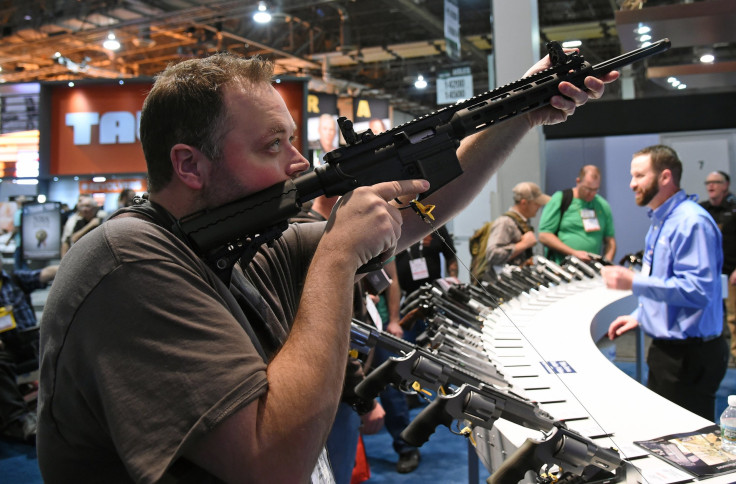Gun CEO Questioned About ‘Military-Style’ Rifles As Smith & Wesson Stock Rallies On US Firearms Sales Growth

Gunmaker Smith & Wesson Holding’s stock rallied this week after the company reported a 22 percent jump in firearms sales in its recently completed quarter.
And despite Sunday’s massacre of 49 people in the Pulse nightclub in Orlando, Florida, involving an AR-15-style semiautomatic rifle, the company’s CEO brushed aside concerns of any “volatility” in the sale of his company’s “15 family” of “modern sporting rifles.”
Shares in the 164-year-old maker of M&P handguns and AR-15-style semiautomatic rifles jumped more than 10 percent this week, to $23.65, after investors bought shares following Sunday’s massacre.
By Thursday, that gain had been nearly wiped out, but the shares (NASDAQ:SWHC) rallied Friday after the company said it handily beat revenue and profit forecasts in the three months ending April 30.
In the three months ending April 30, the Massachusetts-based company reported net profit of $35.7 million, above Wall Street’s estimate of $29.7 million, on revenue of $221.1 million, over the $214.5 million forecast. Earnings per share came in at 63 cents instead of the estimated 53 cents. Smith & Wesson also said it expects a 32 percent jump in revenue in the current quarter, fuelled largely by handguns sales.
"Looking ahead to fiscal 2017," CEO and President James Debney said, "we expect that a strong balance sheet, combined with our track record of successful acquisitions, positions us well for an expanding role in the market for products for shooting, hunting and rugged outdoor enthusiasts."
Thursday night’s conference call with analysts, as expected, focused mainly on the company’s balance sheet. But one question from research analyst Brian Ruttenbur of CRT Capital Group alluded to headline-making news this week in the world of gun control.
Pulse nightclub killer Omar Mateen used a Sig Sauer MCX semiautomatic rifle, which can fire up to about 45 rounds a minute and is similar to the AR-15 and Smith & Wesson's M&P15. On Thursday, President Barack Obama called on Congress to make these types of “extraordinarily powerful weapons” more difficult for would-be mass murderers to obtain.
“In terms of your guidance — just trying to understand — military-style rifles is still the preponderance of your long guns, and that was, I believe, 19 percent of your total revenue,” Ruttenbur said, referring to Smith & Wesson’s large selection of the AR-15-style semiautomatic rifles. “Do you anticipate that part of the business continue to grow rapidly?”
“You are referring to modern sporting rifles, yes Brian,” replied Debney, steering the question toward the larger category of long guns, which includes hunting rifles and shotguns. “Yes, they are a component of the long-gun category, as we explained in our prepared remarks, they were 19 percent of total units shipped. That's everything, both action rifles, single shot, muzzleloader.”
Debney said he wasn’t worried about the “volatility we have experienced from time to time in that category.” This volatility, he said, was “one of the reasons the vast majority of the components required to assemble our modern sporting rifle, both Smith & Wesson's and our M&P 15 family, is outsourced.” He pointed out that federal background checks on “long guns” (a category that includes assault-style semiautomatic rifles, hunting rifles and shotguns) rose 2.2 percent in the three months ending April 30 compared to the same period last year.
In other words, if stricter measures on the sale of military-style rifles (or, in gun CEO parlance, “modern sporting rifles”) is in the works, it won’t matter much to Smith & Wesson’s operations. The company doesn’t break out percentage sales of its “15 family” assault-style rifles, but the share is likely to be a sizable portion of the long-gun category considering how many different types the company sells.
© Copyright IBTimes 2024. All rights reserved.




















